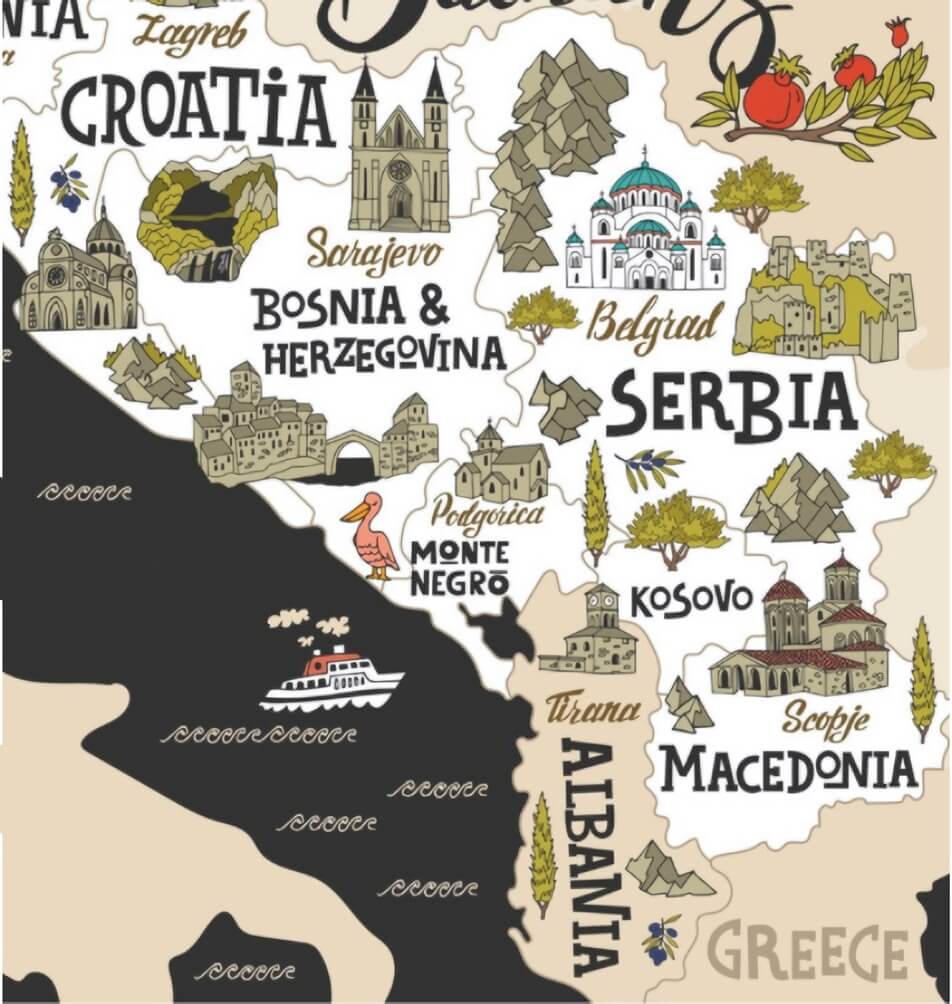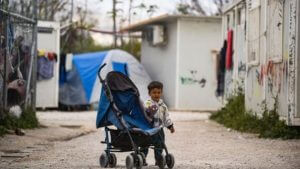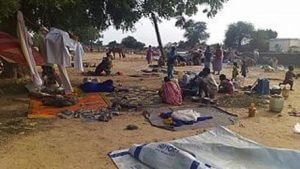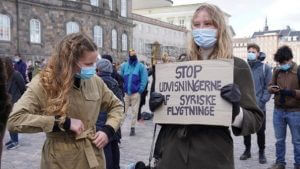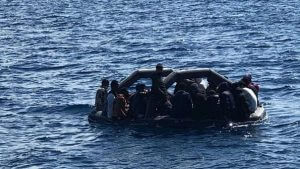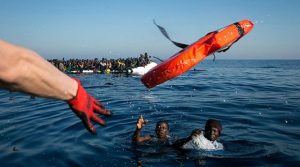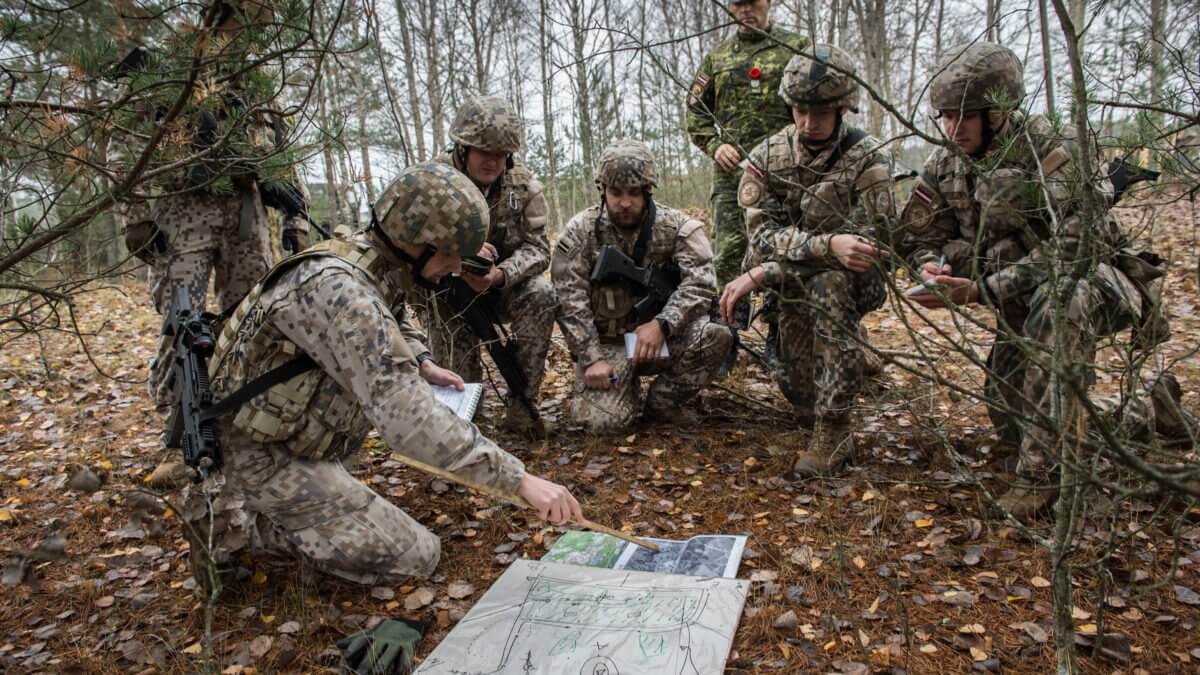Abstract
The relationship between gender and crime has always been a crucial subject for researchers to discuss. The purpose of this article is to review previous materials about crime and gender, especially female offenders and understand why women commit less crime than men. Firstly, the effects of gender roles and gender stereotypes are focused on crime settings and female offenders. Also, how female offenders are treated in the justice system. A piece of research indicates the sociodemographic construction of female criminals; more specifically, the women convicts’ economic, educational, social, and psychological situations are taken into consideration. On the other hand, the perception of female offenders is critical to understand crime and gender relationships. Additionally, the correlation between crime and self-control has been an intriguing field of criminal psychology. This review article, therefore, examines the previous findings on this issue and tries to create a comprehensive look. Furthermore, literature is reviewed for gender differences in serial murders and the number of female serial killers is less than male ones. Moreover, the effects of aggression are pointed out to understand the behind of criminal behaviours.
Keywords: Crime, gender, gender gap, female offenders, gender roles.
1. Gender Roles and Gender Stereotypes
Gender and crime are relational topics in every part of the world. There is an obvious difference between the crime rates of men and women (Steffensmeier & Allan, 1996). There is even a gender gap in that topic. There are different reasons to explain why this gender gap is observed. In Turkey according to data from TÜİK (Turkish Statistical Institute) in 2019, just 3.9% of prisoners are women, rest of them are men (TÜİK, 2020). This is a clear picture of less crime rate of women. This recent article will point out some of the reasons behind the gender gap between men and women.
Gender roles and stereotypes can be one of the reasons why women are committing fewer crimes. Firstly, the gender roles and stereotypes in Turkey are needed stress to understand these differences. The research of Sakallı-Uğurlu et al. (2018) shows that “women were mostly described as emotional, jealous, easily-offended, faithful, delicate, self-sacrificing, warm, intelligent, sensitive, gossipy, ambitious, compassionate, beautiful, considerate, hardworking, attractive, and fragile; whereas men were mostly described as jealous, strong, selfish, emotional, ambitious, angry, rude, childish, rational, hardworking, intelligent, honest, brave, and protective.” (p.309). In this study, researchers asked participants to write ten adjectives instead of giving a list of adjectives so it gives a more appropriate result about the gender stereotypes because there is no guidance or limit for participants to choose and this study emphasizes that gender roles are a part of these stereotypes (Sakallı-Uğurlu, 2018). Gender roles which are defined for women on the basis of their motherhood and their symbolization of graciousness and sexuality in Turkish society are the main structure of taboos. Therefore, women are expected to marry, raise children and be loyal to their man which is the centre of their life (İlbars, 2007). This is an explanation of how gender roles influence gender stereotypes. Motherhood can easily attach to characteristics which are being emotional, warm, and self-sacrificing as a role and these are also the stereotypes for women. In addition to that, fear of sexual victimization could be another reason explain less crime rate because of that fear, women stay away from places where they can be part of committing a crime (İlbars, 2007). There is a clear bond between women and crime contrary to men because crime is labelling and humiliating for a woman (İlbars, 2007). Therefore, men can commit crimes without thinking too much and they are not afraid of being rejected by society. However, women can be labelled and excluded from society because they commit a crime. When the crime types are examined, women and men are different even in that part. For example, the gender gap among offenders can be seen in major crimes such as violent crimes; on the other hand, this gap is the flu when the situation comes to minor crimes such as drug abuse (Steffensmeier & Allan, 1996). Additionally, the prosecution process is also feeding the gender discrepancies by judging women much harsher than deserved or more leniently than they deserved (Mallicoat, 2019). For instance, Pollak (1950) claims that the criminal justice system is less punitive toward women even if they commit a crime and behave as deviant as men (as cited in Mallicoat, 2019). Hence, Belknap (2007) says that this attitude can be harmful to the gender equality expectation because it means that women are not seen as equal to men and they are positively discriminated against even in a justice system (as cited in Mallicoat, 2019).
2. The Sociodemographic Data from Female Criminals
The dramatic changes in economic and social structure have caused the change in societal roles of women (Ersen et al., 2011). By the time women have started taking place in economic, social, and political areas, interest in “female criminology” has increased; yet it is not adequate (Ersen et al., 2011). In a little research conducted in different regions of the world, two facts have been determined: women commit crimes less than men and women criminals are not more than 20% of overall criminals even in the countries where women criminals are at the top (Balcıoğlu et al., 1997). For Turkey; on the other hand, this statistic is known to be between 2.5% – 3.5% (Balcıoğlu et al., 1997). Studies have proven the fact that crime differs according to the factors such as age, gender, marital status, education, job, residence, political and economic fluctuation, and geographic conditions (Öğün Boyacıoğlu & İçli, 1998).
When female criminality is examined, it is seen that women most probably commit enormous crimes such as killing and injury in order to protect themselves (Ersen et al., 2011). One of the most effective reasons why individuals are prone to crimes is claimed to be a lack of education (Öğün Boyacıoğlu & İçli, 2000). Moreover, when female convicts’ marital status is taken into consideration, it was seen that the majority consists of women who are married and divorced, also the criminality probability was higher for divorced women (Öğün Boyacıoğlu & İçli, 1998). It could be contended that divorced women have to struggle with economic, sociological, and individual problems more and it conveys women to the crime (Ersen et al., 2011).
Furthermore, 79.4% of female criminals have never demanded psychiatric applications before having been sentenced (Ersen et al., 2011). When it is considered, it can be concluded that the need for psychiatric help and support is high (Ersen et al., 2011). However, 35.3% of female criminals’ monthly salary is less than the minimum wage (Ersen et al., 2011). The struggle against poverty and health insurance for those; therefore, should be an important social policy (Ersen et al., 2011). There has not been any significant difference between parents’ attitude scores among groups and this information leads us to the idea that the general structure of the Turkish family is authoritarian (Ersen et al., 2011). The physical symptoms have been investigated through the question “How often do the symptoms below appear when you get angry?” (Ersen et al., 2011). The anger symptom scores of female criminals are statistically much higher than the control group, which consists of women who have not committed a crime (Ersen et al., 2011).
Any significant statistical difference regarding “aggressive behaviours” scores has not been determined in the third part named “behaviours related to anger” (Ersen et al., 2011). It was contended that women prefer to express their anger indirectly whereas men tend to express their anger through physical reactions (Biaggio & Godwin, 1987). Additionally, it was indicated that anger is not regarded as suitable for women so women do not explicitly show their anger and they repress this feeling (Ersen et al., 2011). Calm and anxious behaviours are the types of suppressed and repressed anger (Ersen et al., 2011). In the literature, it is indicated that self-directed anger might cause psychiatric struggles such as depression, somatic problems, and committing suicide; and physical illnesses such as ulcers and heart diseases (Biaggio & Godwin, 1987).
In the study conducted by Ersen et al. (2011), the fact that female criminals’ scores on “calm” and “anxious behaviours” were high indicates that women direct their anger to themselves. Thus, it may be deduced that psychiatric and physical illnesses can be seen more in women prisoners (Ersen et al., 2011).
3. Perception of Female Offenders
In the thesis of Purcel (2020), she gave a questionnaire to the participant in order to understand how other people perceive female offenders’ characteristics. Questions are related to the traumatic experiences of offenders, substance use, psychological disorders, and the motherhood-related feature of the offenders. She concluded that female offenders are perceived by people as having all of these characteristics they are seen as traumatized, omnibus psychological problems like depression, and PTSD; they are expected to use drugs and motherhood is a specific feature for them (Purcel, 2020). This research can be attached to the gender stereotypes of women and an idea may come to mind. Therefore, when women commit a crime, it should be rationalized by other reasons due to the presence of gender norms because stereotypically women are innocent, kind, and emotional so they should not behave inappropriately and they could not be dangerous unless there is another reason for that like victimization, other people’s control on them (Russel, 2013).
The emancipation hypothesis argues that women started to gain power and equality in most areas so this equality will spread to major crimes. Also, some researches show that women commit crimes and could be abuser, and bullies, and can show violence toward their intimate partners (Russel, 2013). Straus and Ramirez (2007) argue that gender symmetry is seen between men and women in showing physical violence toward partners as offenders. Follingstad et al. (1991) claim that few women discourse that they use violence in their relationship as a way of defending themselves on the contrary most of the women who are the perpetrators of intimate partner violence are equally as hostile as counterpart men (as cited in White & Dutton, 2013).
4. The Link Between Self-Control and Crime
“Self-control is directed to the fact that ‘individual differences in the tendency to commit criminal acts… remain reasonably stable with change in the social location of individuals and change in their knowledge of the operation of sanction systems. This is the problem of self-control, the differential tendency of people to avoid criminal acts whatever the circumstances in which they find themselves. Since this difference among people has attracted a wide variety of names, we begin by arguing the merits of the concept of self-control. (p. 87; italics in original)” (Akers, 1991, p. 202).
A well-known study conducted by Gottfredson & Hirschi (1990) asserts that alteration in individuals’ capacity to show self-control as opposed to the appeal gives a reason for distinctions in criminal behaviour (Tittle et al, 2003). Individuals who have low self-control, which is a circumstance normal to all those who have not had an opportunity to learn otherwise, apparently experience difficulty in predicting the long-term adverse conclusions of their actions (Tittle et al., 2003). Correspondingly, they tend to answer to the chances for wrongdoing, which are omnipresent, as reported by Gottfredson & Hirschi (Tittle et al., 2003). Those with high levels of self-control, nevertheless, combat appeal since they are aware that wrongdoing is catastrophic in the long range (Tittle et al., 2003).
“The net outcome should be a strong negative relationship between self-control and criminal/deviant behaviour (low self-control, high misbehaviour; high self-control, low misbehaviour” (Tittle et al., 2003, p. 334). This correlation is hypothesized not to be deterministic by claiming that lower levels of self-control do not have to lead to crime in every condition and many other variables may influence the outcome (Tittle et al., 2003). Nonetheless, scholars argue that conditions prominent among sociologists, such as decency, strain, peer effects, social relations, cultural items, or social disadvantages indeed have some impact (Tittle et al., 2003).
Today, some of the theories which try to explain and evince the basic motives behind the commitment of a crime and its relation to gender use general strain theory by Broidy and Agnew (1997) as evidence that “gender differences in the types of strains and reaction to strain help us understand the gender gap in crime” (Kruttschnitt, 2016). At this point, focusing on the topic of how the dynamics behind the commitment of serial killing as a constraint behind “crime” develops and how the behaviours and motives of male serial killers (MSKs) versus female serial killers (FSKs) differentiate(Harrison, Hughes, & Gott, 2019); is critical to understand the qualitative-quantitative researches which point gender differences in crime (Kruttschnitt,2016). It is found that “MSKs more frequently act as “hunters,” stalking and killing targeted strangers in dispersed areas, while FSKs more frequently are “gatherers” killing those who are around them and familiar to them and gaining profit from their crimes (Harrison, Hughes, & Gott, 2019). As it is discussed by M. A. Harrison and colleagues (2015) “sex differences in motives between serial murderers follow evolved, sex-specific mating strategies” (Harrison, Hughes, & Gott, 2019). In this case, the differences in the approach of the way they commit the crime are said to be strongly influenced by these tendencies following the fundamental sex differences in reproductive potential (Hickey, 2010; R. M. Holmes & Holmes, 2010). Male serial killers are also said to travel more to “forage” for their victims (Hickey, 2013; R. M.Holmes & Holmes, 2010), as captured in Harrison, Hughes, & Gott (2019). They are most likely to butcher their victims and keep “trophies” of the murders they have committed to (Federal Bureau of Investigation, 2005; Miller, 2014). This set of behaviours may be classified in terms of “fitness psychology”, stated by Duntley and Buss (2011). Along with the observation of homicide trends, about 1 in 6 serial killers (about 17%) are women (Hickey, 2010).
Federal Bureau of Investigation (2005) shows that serial murders are approximately 1% of all murder cases (Harrison, Hughes, & Gott, 2019). Besides, female serial killers often kill a partner for financial gain by the occurrence of insurance or inheritance and then change their partner, which also led women to be most likely to be serial monogamists (M.A., Harrison). Overall, female serial killers have a tendency to know their victims and more profit-based motives to kill whereas male serial killers tend to stalk their victims and have a sexual motive to kill. However, the relationship between gender and serial killing based on crime is not being proved by data-based comparison research focusing on the difference between male and female serial killers so far. In this case, even if “theoretical criminology is unable to explain adequately the phenomenon of women and crime.” Leonard (1982: 181) and these researchers are also being “accused” of being “biased”, the relation between gender and crime; specifically in terms of understanding the motives of serial killing and other crimes, will be a topic to discuss furthermore.
5. The Problem of Victimization and Agency of Woman
There is another point to discuss in which the agency of women versus the systematic “victimization” of women opposes searching for the constraints and relation between gender and crime motives (Kruttschnitt,2016). As sex role theory emphasized that sex roles determine behaviour regardless of the situation (Connell, 1993), what is stated Kruttschnitt is; in stressful situations, both males and females may be more likely to revert to traditional ways of “doing gender” (Kruttschnitt,2016).
In this case, while evaluating the subjectivity of women in committing crime-based actions, the perceptions and evaluation of the perception of society are critical to “determine” the motives of women. Therefore, “perceptions are not simply a product of abstract gendered moral codes (“girls don’t get involved in crime, and especially violent crime”; rather, as many scholars have pointed out, they are dynamic and situationally negotiated just as gender identity is (Kruttschnitt, 2013: 298–9)” (Kruttschnitt, 2016). However, this type of “state dependence” is gendered. (Nagin and Paternoster, 1991: 164) Also, when evaluating the childhood and the background of the crime-related “personalities” it may be observed some common “gendered pathways to crime” however, in reality, they are far more complex than the extant pathways literature has led us to believe (Kruttschnitt, 2016). As an explanatory paradigm, women’s use of violence has relied heavily on “victimization”; especially in intimate partner violence (Kruttschnitt, 2016). On the other hand, aggression is mostly emphasized as the basic motivation behind the repression of “inner anger” and the point which women tend to be involved in crime is associated with their reflection of emotions in an inappropriate way. The problem of assigning so much prominence to victimization as an explanation of female offending occurs as a problem (Kruttschnitt,2016).
Assigning women and women’s tendency to commit crime to their experiences as victims have a background in the discussion of woman’s action-making and the act of agency. These women’s actions and behaviours are observed in the context of their economic survival and their history of physical or sexual victimization. Plus, the attention drew to women as victims of two particular social forces: Economic and sexual exploitation (Kruttschnitt,2016). “But where do victimızation end and responsibility for acts that harm others begin? How do we characterize women when they do things that are wrong?” Kruttschnitt asks. Thinking about the agency of women is not about the failure to distinguish “cause from blame” (Felson, 2014). Giving agency to women in terms of committing crimes a conflict with the perception of women as the victims of such social processes. Therefore, women seem to be portrayed as the “responsive” side in the action-making-committing crime; which makes the motivation related to the feeling of being repulsed by external factors which leads to repression (Kruttschnitt, 2016).
Müşerref AYDIN
Ceren KURUL
Özge GÜRBÜZ
Gender Studies Staj Programı
Bibliography:
Akers, R. L. (1991). Self-control as a general theory of crime. Journal of Quantitative Criminology, 7(2), 201–211. https://doi.org/10.1007/BF01268629
Balcıoğlu, İ., Cansunar, F. N., Asırdizer, M., Aycan, N., & Batuk, G. (1997). Kadının suça yönelimi: Karşılaştırmalı bir çalışma. İstanbul Üniversitesi Hukuk Fakültesi Mecmuası, 55(3), 341-351.
Biaggio, M. K., & Godwin, W. H. (1987). Relation of Depression to Anger and Hostility Constructs. Psychological Reports, 61(1), 87–90. https://doi.org/10.2466/pr0.1987.61.1.87
Ersen, H., İlnem, M.C., Havle, N., Yener, F., Karamustafalıoğlu, N., İpekçioğlu, D. (2011). Suç işlemiş kadınların sosyodemografik özellikleri, anne-baba tutumları ve öfke ifade biçimlerinin değerlendirilmesi. Klinik Psikiyatri Dergisi, 14(4), 218-229.
Gottfredson, M. R., & Hirschi, T. (1990). A general theory of crime. Stanford University Press.
Harrison, M. A., Hughes, S. M., & Gott, A. J. (2019). Sex differences in serial killers. Evolutionary Behavioral Sciences, 13(4), 295–310. https://doi.org/10.1037/ebs0000157
İlbars, Z. (2007), Suç Antropolojisi: Kadın ve Suç, Antropoloji Dergisi, 22, 1-13.
Kruttschnitt, C. (2016). The politics, and place, of gender in research on crime. Criminology, 54(1), 8-29.
Mallicoat, S. L. (2019). Women, gender, and crime: Core concepts.
Newman, G. R.; Trilling, C. (1975). Public perceptions of criminal behavior: A review of the literature. Criminal Justice and Behavior, 2(3), 217–236. doi:10.1177/009385487500200303
Ortaköylü L., Taktak Ş., Balcıoğlu İ. (2004) Kadın ve Suç. Yeni Symposium, 42, 13-19.
Öğün Boyacıoğlu, A., & Tülin, İ., (1998). Sosyal değişme süreci içerisinde kadın suçluluğu. H.Ü. Edebiyat Fakültesi Dergisi.
Purcel, L. E. (2020). Public perceptions of female offenders and their treatment needs [Master Thesis]. University of North Dakota, Grand Forks, North Dakota. Retrieved from https://commons.und.edu/theses/3119
Russell, B. L. (2013). Perceptions of female offenders: How stereotypes and social norms affect criminal justice response. Russel, B.L. (Ed.). Perceptions of Female Offenders (pp.1-8). Springer Science + Business Media, New York.
Sakallı-Uğurlu, N., Türkoğlu, B., & Kuzlak, A. (2018). How are women and men perceived? Structure of gender stereotypes in contemporary Turkey. Nesne, 6(13), 309-336. Steffensmeier, D., & Allan, E. (1996). Gender and crime: toward a gendered theory of female offending. Annual Review of Sociology, 22(1), 459–487. https://doi.org/10.1146/annurev.soc.22.1.459
Straus, M. A., & Ramirez, I. L. (2007). Gender symmetry in prevalence, severity and chronicity of physical aggression against dating partners by university students in Mexico and USA. Aggressive Behavior, 33 , 281–290. Doi:10.1002/ab.20199
Tittle, C. R., Ward, D. A., & Grasmick, H. G. (2003). Self-control and crime/deviance: cognitive vs. behavioral measures. Journal of Quantitative Criminology, 19(4), 333– 365. https://doi.org/10.1023/B:JOQC.0000005439.45614.24
Türkiye İstatistik Kurumu (TÜİK). (2020, November 20). Ceza İnfaz Kurumu İstatistikleri, 2019. Retrieved from https://data.tuik.gov.tr/Bulten/Index?p=Ceza-Infaz-Kurumu-Istatistikleri-2019-33625
White, K.R., & Dutton, D. G. (2013). Perception of female perpetrators. Russel, B.L. (Ed.), Perceptions of Female Offenders (pp.101- 116). Springer Science + Business Media, New York.


